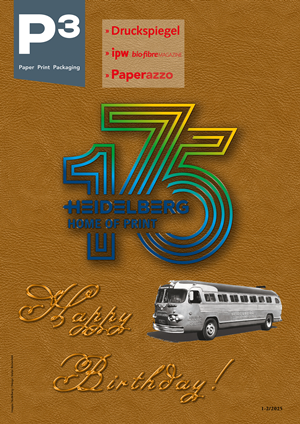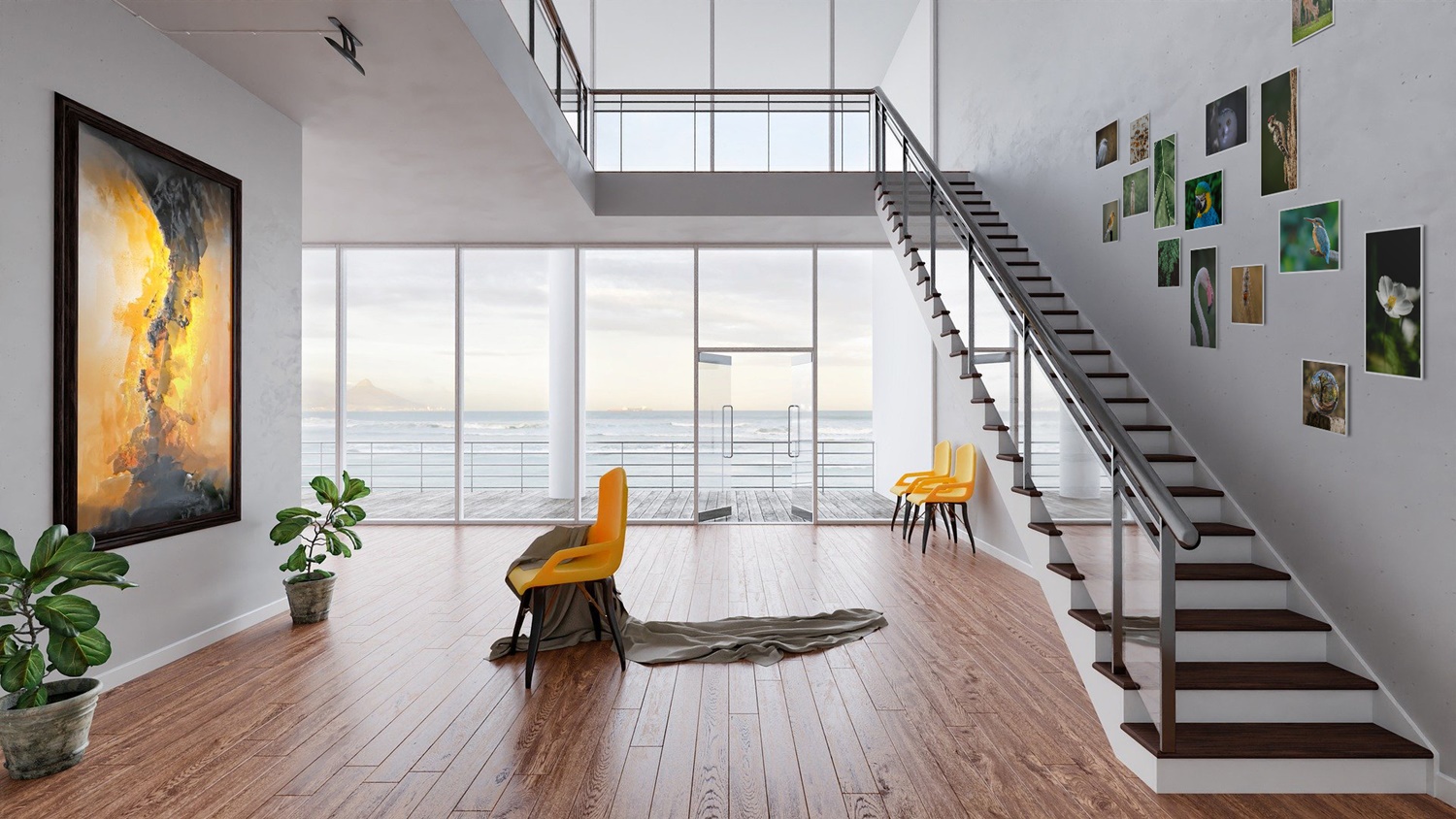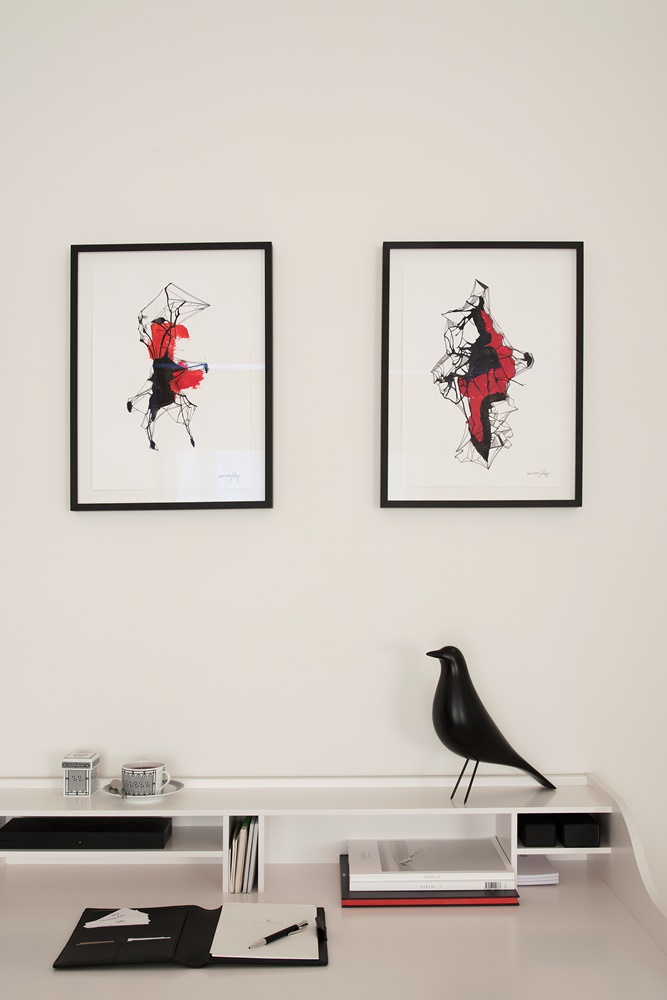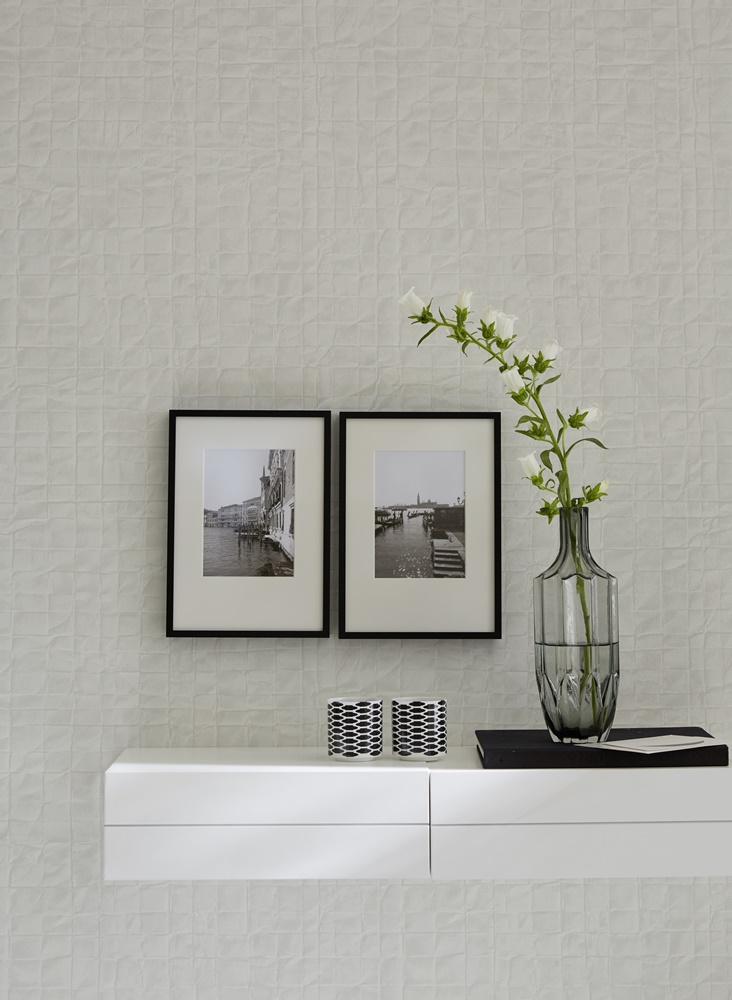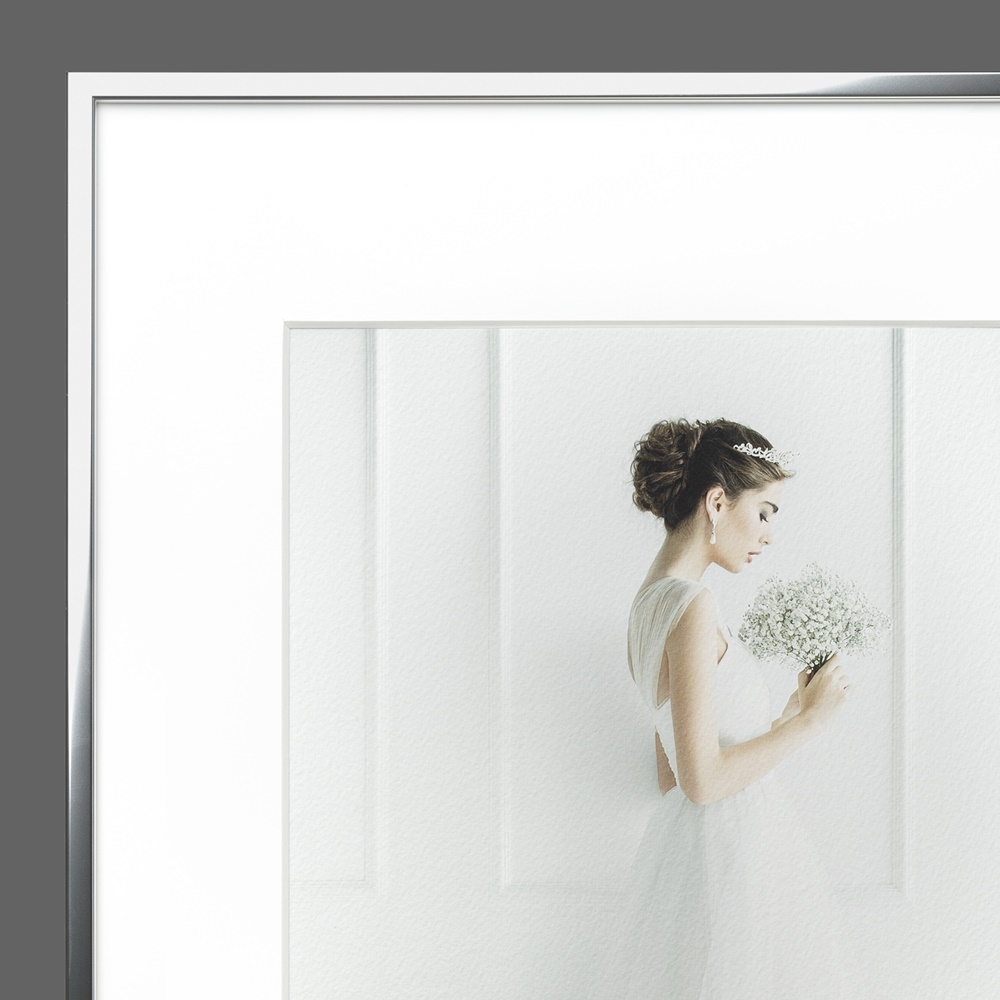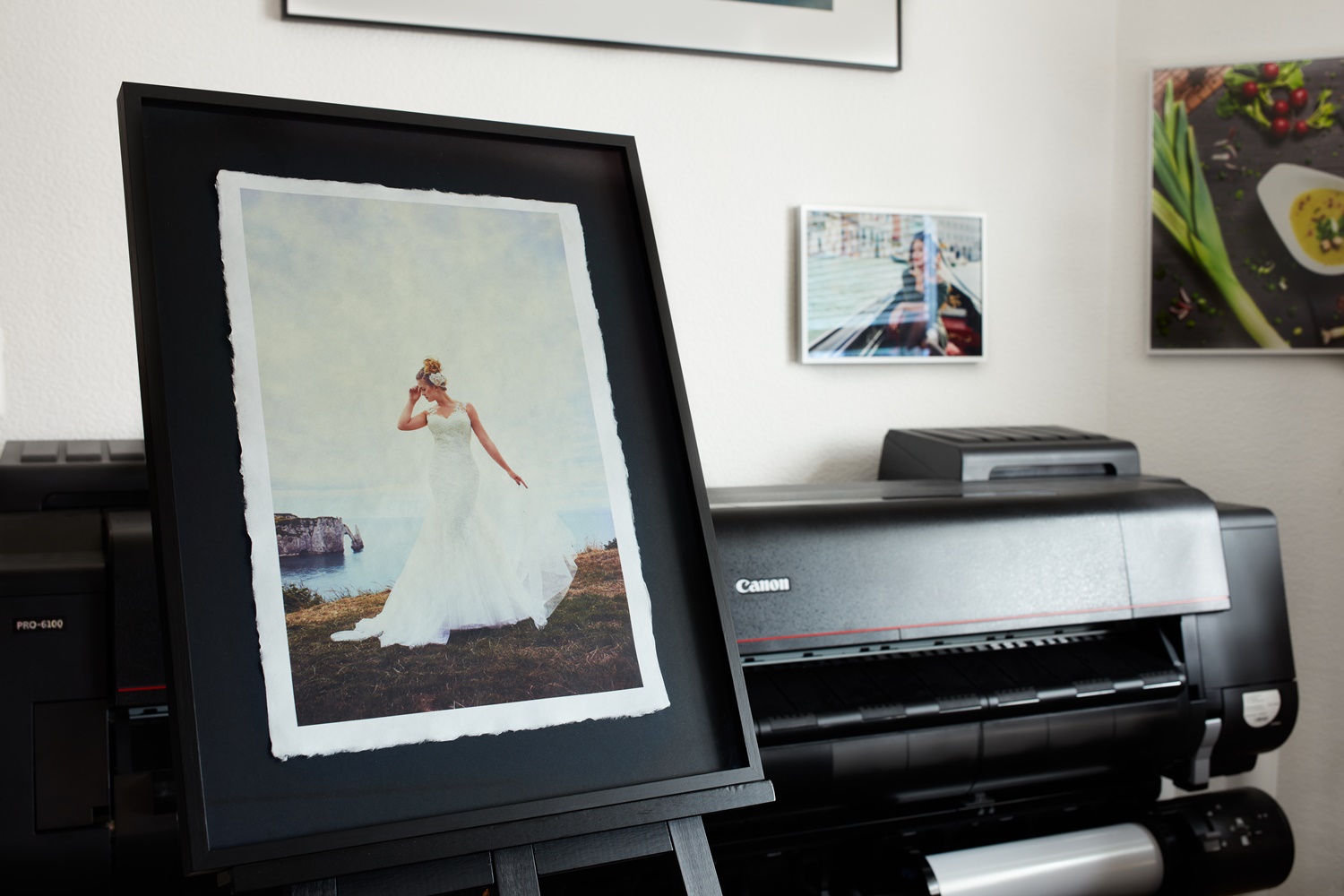P3 1-2/2023 en
Magnetic Frames
Trends & Practice
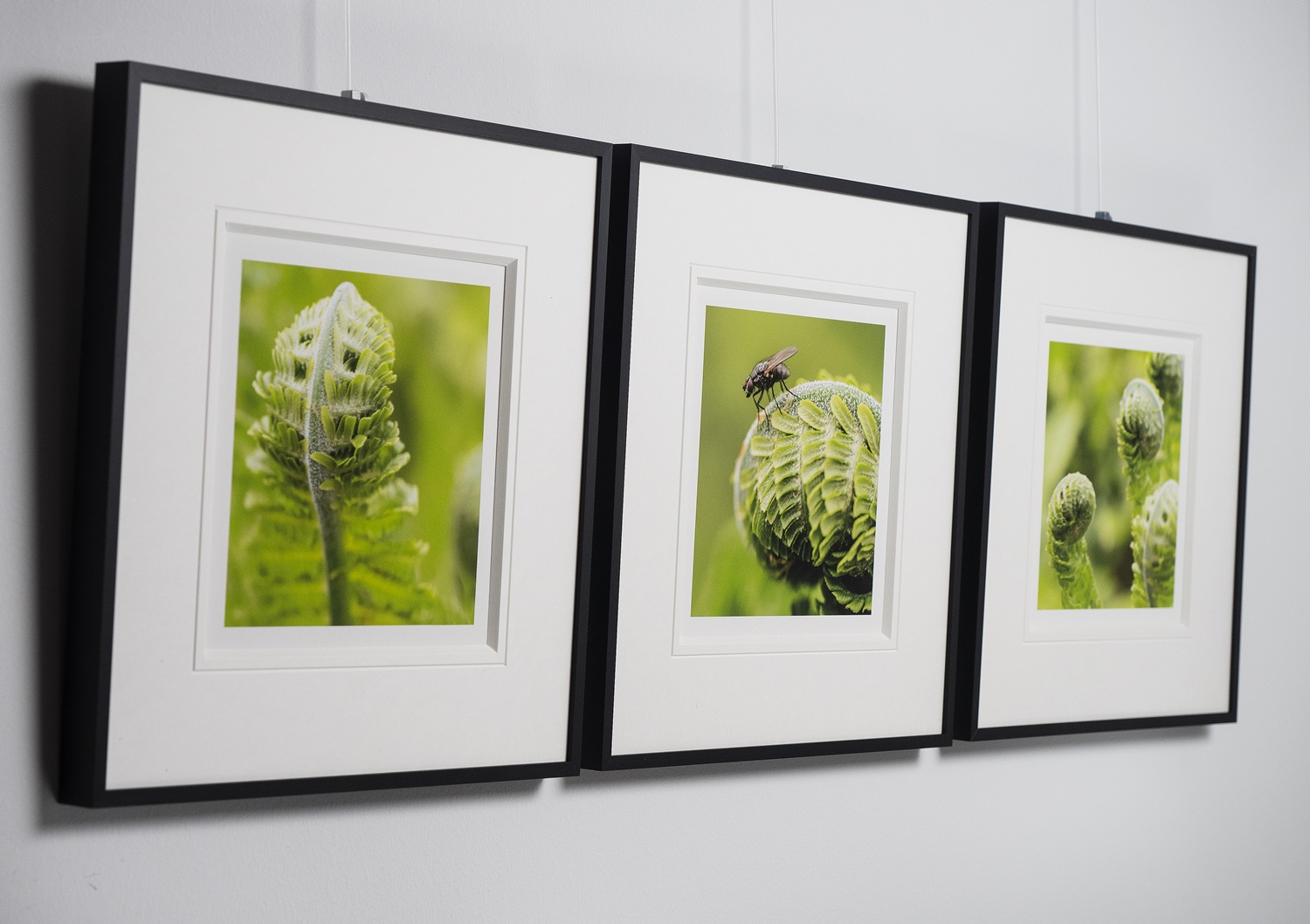
A dark frame suits many subjects. But a dark frame is not always the same as a dark frame - wood profiles are generally perceived as warm and soft, while aluminum is modern and cool.
The variety of fine art papers is huge. In addition to glossy, matt and structured types of paper, there have even been sustainable natural papers made from rapidly renewable raw materials such as bamboo or hemp for some time. The effect of an image is different on each paper. Smooth cotton papers are suitable for many motifs. Strongly structured textured papers give a three-dimensional quality to landscape motifs in particular, which enhances the effect of the image through incredible depth. Heavy fine art papers give the viewer an additional feeling of value due to their high grammage and special feel. But a successful presentation of a fine art print is unthinkable without a suitable frame. Art lovers all over the world appreciate the know-how of Halbe-Rahmen (www.halbe-rahmen.de) to perfectly stage their small and large works of art.
A dark frame suits many subjects. But a dark frame is not always the same as a dark frame - wood profiles are generally perceived as warm and soft, while aluminum is modern and cool.
Fine art paper for the highest quality standards
Each fine art paper has its own character. The spectrum of glossy surfaces ranges from satin to pearl to high-gloss - also known as baryta. Metallic papers, for example, offer a fascinating metallic luster effect with a touch of extravagance. The impressive and lively image depth of this paper is particularly suitable for the presentation of fashion, architecture and jewelery photos that have a metallic character.
Matt fine art papers with structured surfaces are very popular, which suggest high quality standards to the viewer due to their special look and feel. But pastel shades of paper are also trendy. The different basic paper tones are a conscious image design tool to give the motif additional warmth or coldness.
Framing supports the aesthetic effect
In addition to the careful selection of the FineArt paper, the greatest attention should be paid to the frame, because it is an essential part of the artistic expression. Frame color, width and texture have a major impact on the value and impression of the image to the viewer. Art connoisseurs can see immediately whether the frame forms a harmonious unit with the fine art print.
In general, the frame should draw attention to the subject instead of drawing attention to itself. The choice of color is a matter of feeling and taste - there is no rule of thumb. A dark frame suits many subjects. But a dark frame is not always the same as a dark frame - wood profiles are generally perceived as warm and soft, while aluminum is modern and cool. Dark brown wooden frames, such as brown alder or natural walnut, make the black parts of black-and-white photos on pure white, cotton-based Baryta paper look really dark.
If it is a very light motif on a structured, warm-toned to cream-colored FineArt paper, a wooden strip in white maple is ideal. The structure of the paper is reflected in the wood and the broken color makes the yellowish paper shine. The paper would appear "yellowed" in a bright white aluminum frame. On the other hand, a bright white smooth paper literally demands a white aluminum frame.
Colorful subjects often look fantastic in colored frames. However, it is important to ensure that the selected frame color appears in the motif - if necessary even dominates it. "You often only find the perfect frame by trying it out," says David Halbe, Managing Director of Halbe-Rahmen GmbH. “But the choice of profile width should not be underestimated either. Narrow frames underline the noble appearance of very lightly structured paper. A frame that is too wide would compete with the image instead of supporting the impact of the image.”
Handmade fine art papers with a torn deckle edge really unfold with a free-floating framing in a so-called distance magnetic frame, i.e. the frame has a gap between the glass and the back wall, with the fine art print literally floating in the frame. These exclusive fine art prints cannot be staged more expressively.
Framing with a passe-partout and white border is recommended
No matter what type of paper was used - a fine art print should always be framed behind glass with a passe-partout. The passe-partout is not only a classic stylistic device, it also prevents the high-quality print from coming into contact with the glass. The beveled cut of the passe-partout cardboard, which runs inwards, supports the depth effect of the picture and at the same time gives it more development opportunities due to the distance to the frame. Depending on the thickness of the passe-partout, the effect can either be intensified or weakened. Large-format fine art prints require a stronger passe-partout cardboard than small-format motifs.
A 1 - 1.5 cm wide white border to the passe-partout cutout gives every fine art print a certain lightness effect. The white border can be larger at the bottom, because every print should be signed by the artist and provided with the place and date. In addition, insiders can see that high-quality artist paper was used. It is important to ensure that the white of the passe-partout is a shade warmer than the fine art paper. If it is a very dark black and white photo, a black passe-partout also looks impressive.
The right glass for a special viewing experience
The contours of a motif appear always sharper on glossy FineArt paper and simulate more depth. The light reflection can have a disadvantageous effect on the viewing experience. Basically, an anti-reflective museum glass should be used for the framing of fine art prints, which offers an undistorted view of the work of art. This is how the paper structure really comes into its own. It doesn't matter whether it's matt or glossy FineArt paper - nothing is changed by the glass.
Since 1946, the Halbe family has had the perfect framework for lithographs, paintings and photographs. Over the decades, Hubert Halbe's small workshop has developed into a world-renowned quality manufacturer of picture frames. At the Kirchen production site in Rheinland-Pfalz, each frame is manufactured to the highest quality standards and with the craftsmanship of almost 60 employees. In 1973, Halbe-Frame GmbH developed the magnetic frame principle, which forms the basis for all frames. It enables pictures to be framed and exchanged easily and conveniently from the front. The third-generation company supplies picture frames for museums, public institutions, industrial companies as well as for photographers and private households.
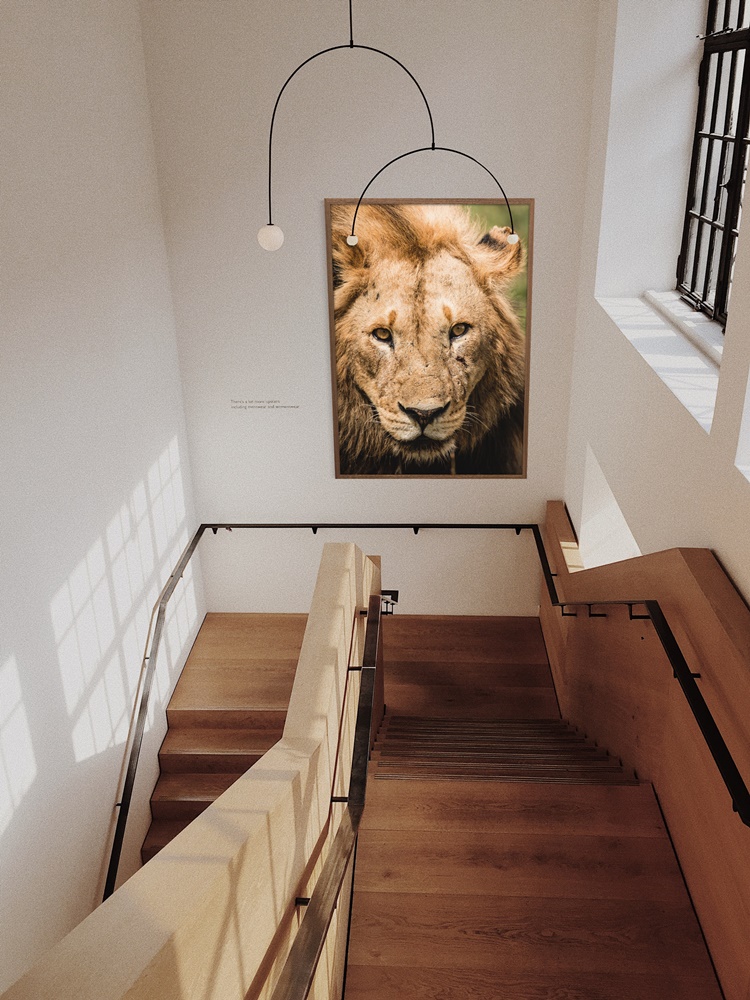
Art connoisseurs can see immediately whether the frame forms a harmonious unit with the fine art print. The selected frame color should appear in the motif - or even dominate it.
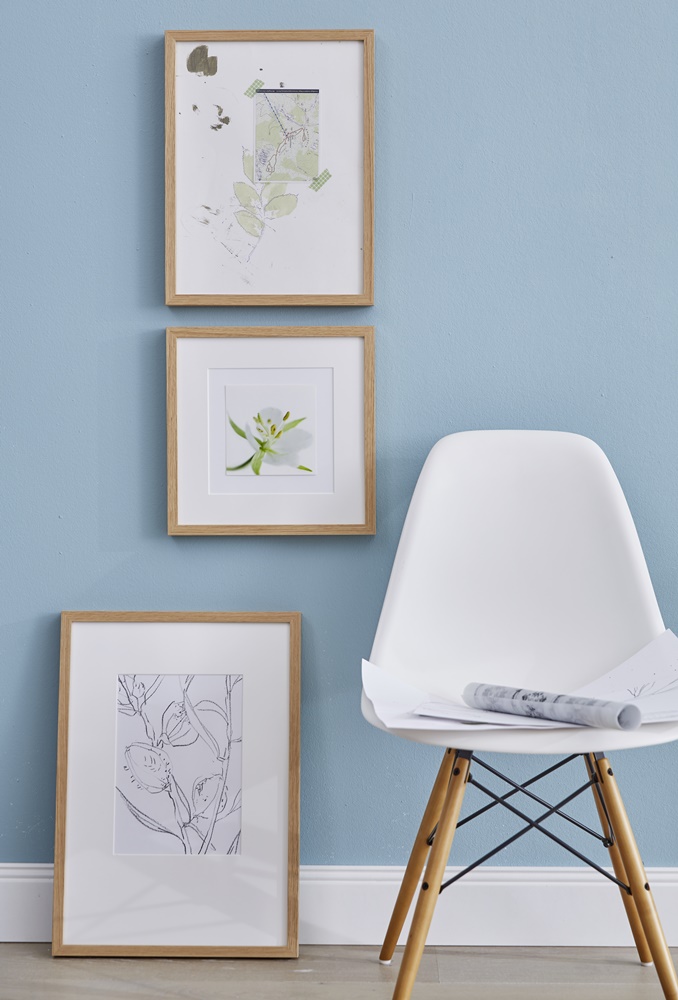
No matter what type of paper was used - a fine art print should always be framed behind glass with a passe-partout. The passe-partout prevents the high-quality print from coming into contact with the glass.
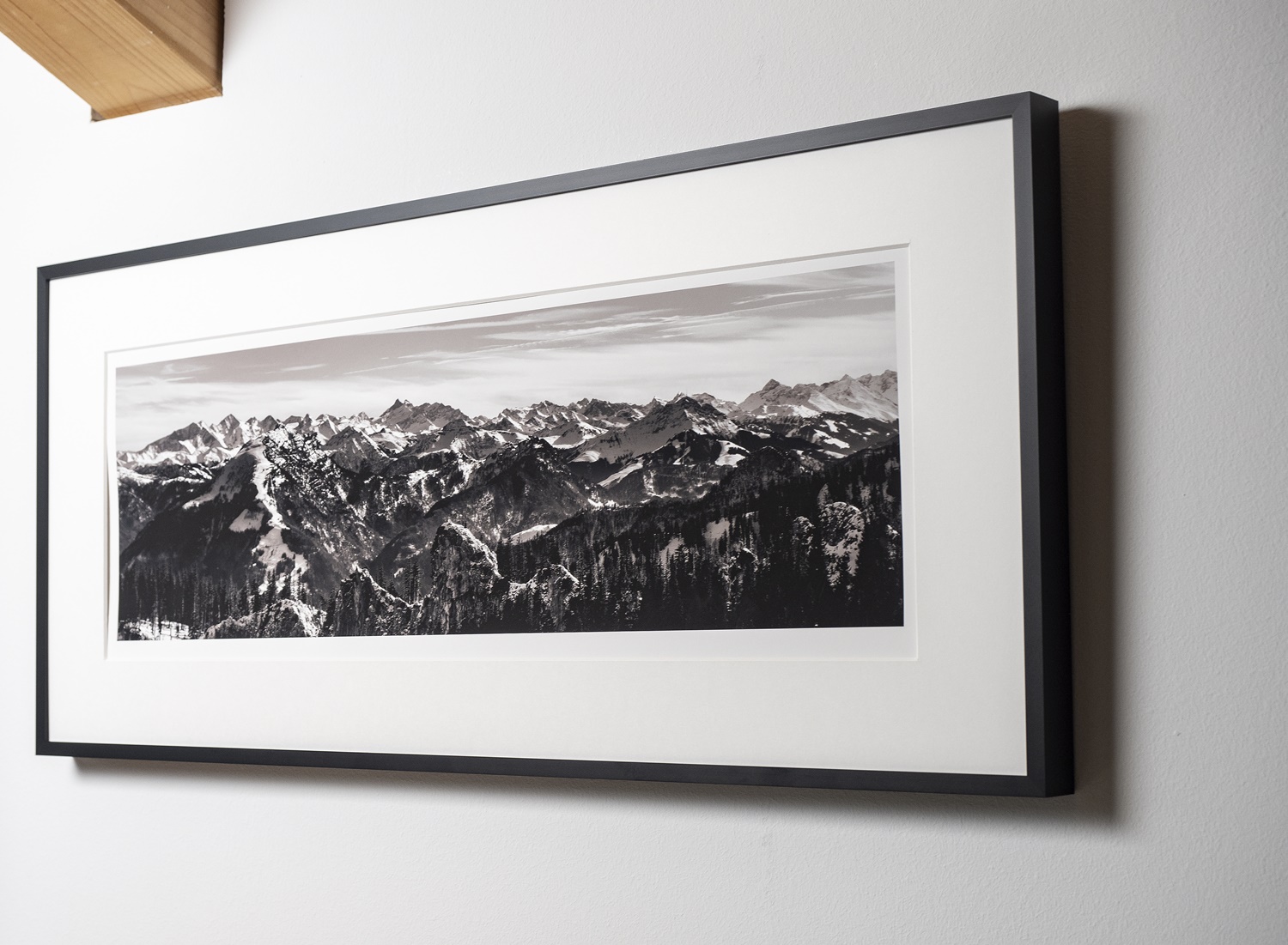
A 1 - 1.5 cm wide white border to the passe-partout cutout gives every fine art print a certain lightness effect.
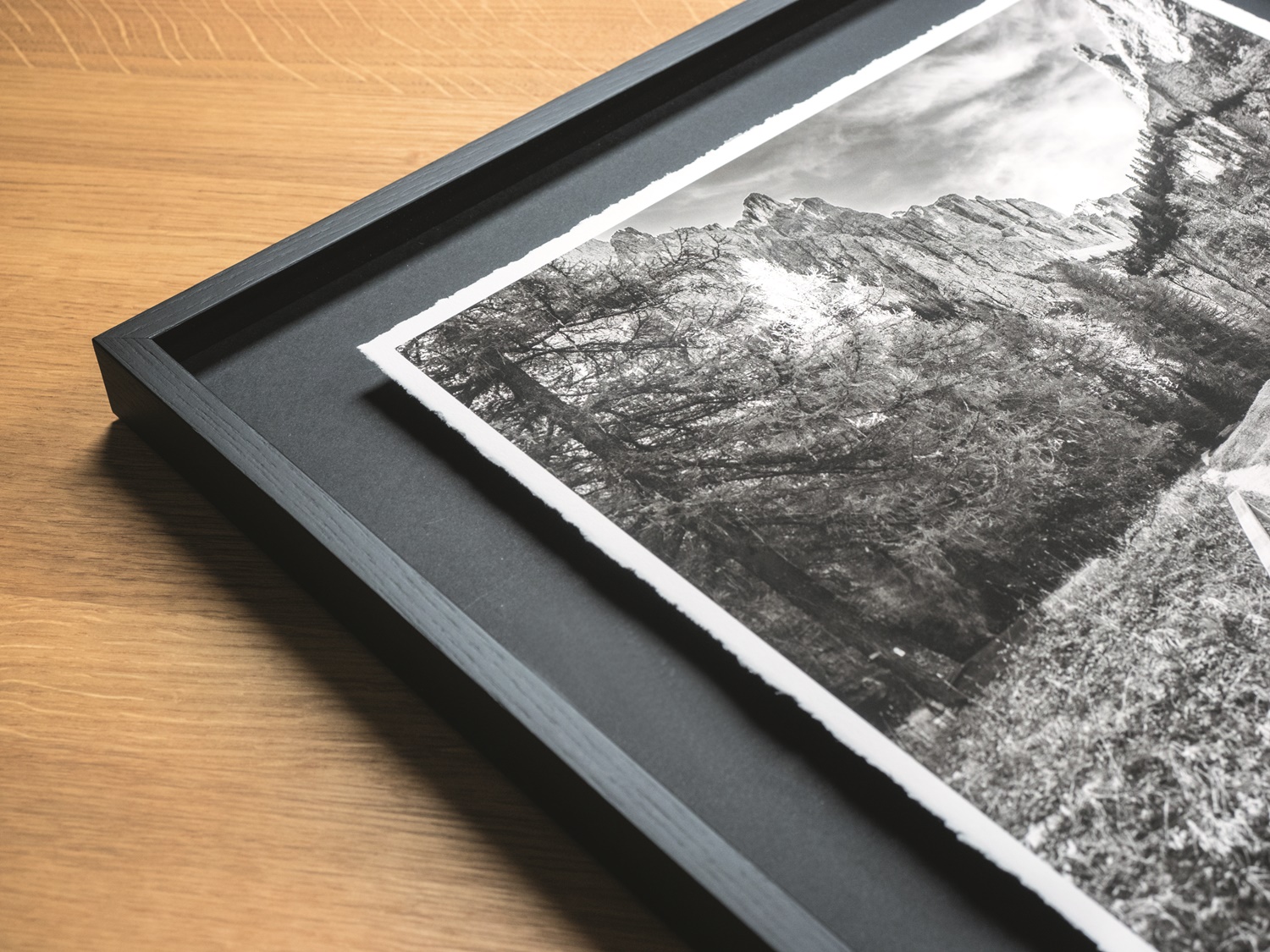
Handmade fine art papers with a torn deckle edge really unfold with a free-floating frame in a distance magnetic frame, i.e. the fine art print literally floats in the frame between the back wall and the glass.
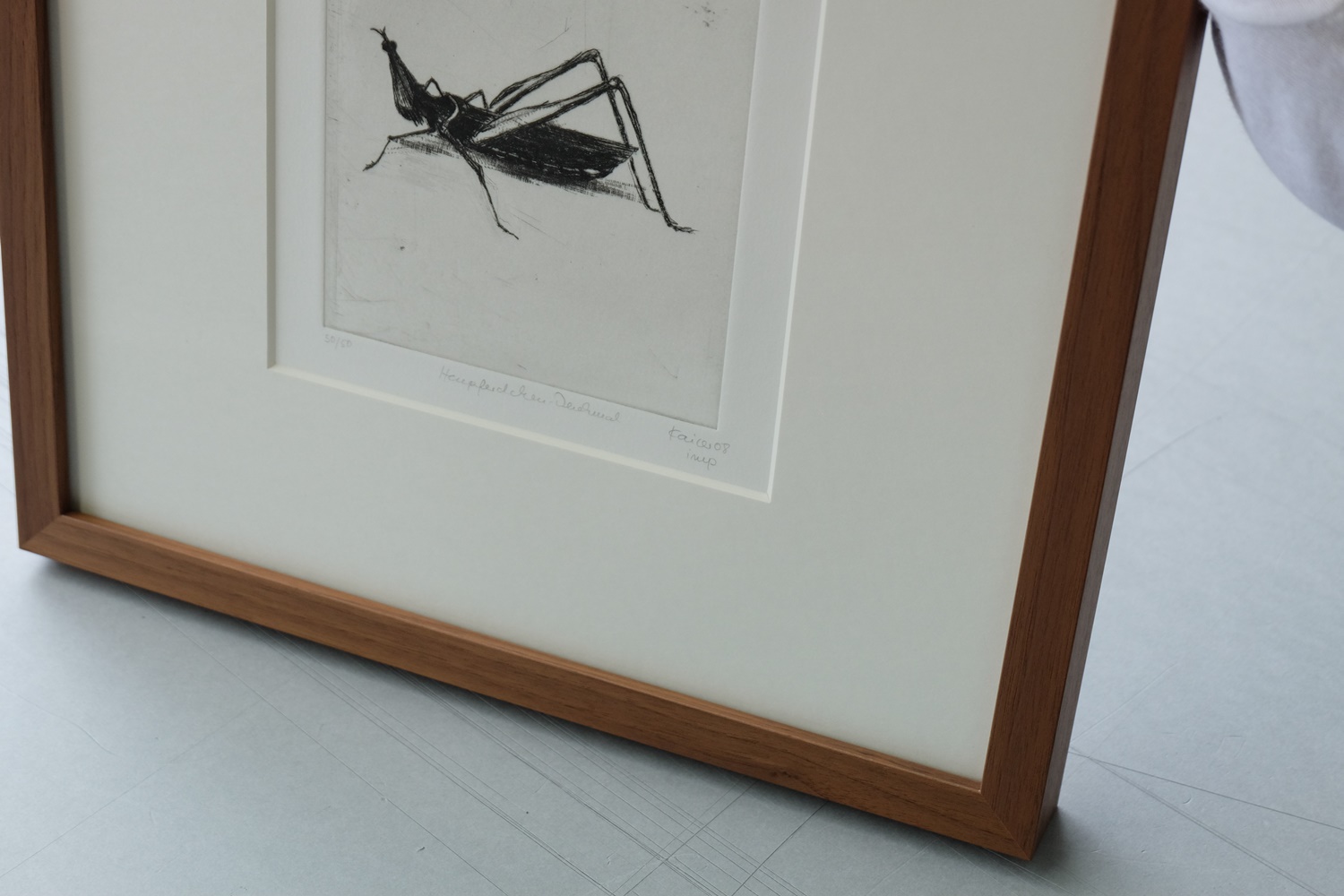
The 1 - 1.5 cm white border may be larger towards the bottom, because every print should be signed by the artist and given the place and date.
Editor: sbr
Images: Abbildungen: Halbe-Rahmen [1,3,4,5,6,7,10]; Hermann Will [2]; FineArtPrinter [8,9]; Jochen Kohl [11]

